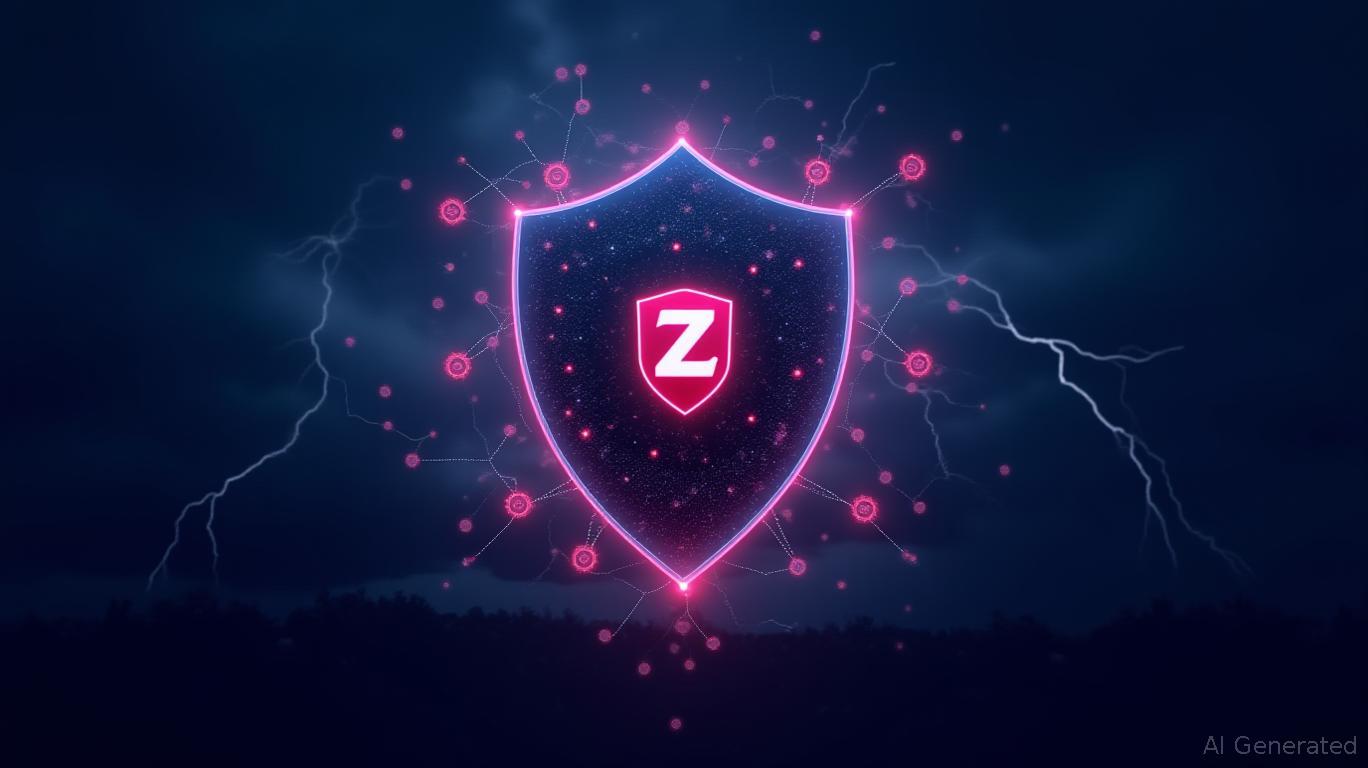AInvest Newsletter
Daily stocks & crypto headlines, free to your inbox
The cybersecurity landscape is undergoing a seismic shift, and Zscaler's definitive agreement to acquire Red Canary marks a decisive move to seize control of this evolution. By merging Zscaler's cloud-native security platform with Red Canary's industry-leading Managed Detection and Response (MDR) capabilities, the combined entity aims to redefine how organizations combat cyber threats. This acquisition is not merely an add-on—it is a blueprint for the future of AI-powered security operations.

The $800 million–$1 billion deal (based on Red Canary's $140 million Annual Recurring Revenue) is a calculated bet on the power of AI to transform cybersecurity workflows. Zscaler's platform processes over 500 billion daily transactions, while Red Canary's MDR solution boasts a 99.6% accuracy rate in threat detection and 10x faster incident resolution. Together, they will create a Security Operations Center (SOC) that merges automated workflows with human expertise—a hybrid model critical for defending against sophisticated, AI-driven attacks.
The integration addresses two core challenges:
1. Missed Threat Signals: Zscaler's Zero Trust Exchange platform, which already protects 45% of Fortune 500 companies, will gain endpoint visibility and identity-driven analytics from Red Canary.
2. Inefficient Workflows: By unifying Zscaler's ThreatLabz threat intelligence with Red Canary's behavioral analytics, the new SOC will automate triage and remediation, reducing response times to minutes rather than hours.
The MDR market is projected to reach $9 billion by 2025, yet Zscaler's entry into this space is both late and overdue. Competitors like CrowdStrike and Microsoft have already staked claims, but Zscaler's scale and global reach—coupled with Red Canary's technical prowess—could tilt the advantage.
Analysts at Jefferies and Cantor Fitzgerald see this as a catalyst for cross-selling: Zscaler's 45,000 customers, including nearly half of the Fortune 500, will now have access to enterprise-grade MDR. Meanwhile, Red Canary's mid-market focus—long underpenetrated by Zscaler—opens a new revenue stream. The synergy potential is undeniable: combining Zscaler's SaaS infrastructure with Red Canary's threat detection could drive non-GAAP EPS growth from $3.04 in 2025 to $3.09 by year-end, despite near-term integration costs.
The deal is not without hurdles. First,
must retain Red Canary's technical talent—a team whose expertise in threat hunting is irreplaceable. Second, regulatory approvals and cultural alignment between Zscaler's sales-driven culture and Red Canary's research-centric ethos are critical. Third, while the acquisition strengthens Zscaler's position against Cisco and Palo Alto Networks, it risks alienating partners like Red Canary's former collaborator, Palo Alto, if not managed deftly.Yet these challenges pale against the rewards. As Oppenheimer analyst Ittai Kidron notes, “Zscaler's data lake and AI infrastructure can supercharge Red Canary's behavioral analytics, creating a moat no competitor can breach.”
At a 5.7x multiple of Red Canary's ARR ($140 million), the deal is aggressive—but justified. Zscaler's $1.8 billion cash reserves and 23.4% YoY revenue growth (Q2 2025: $647.9 million) provide the financial muscle to absorb integration costs. Analysts project Zscaler will hit $2.65 billion in annual recurring revenue by 2025, with 2026 revenue growth exceeding 23%.
Zscaler's acquisition of Red Canary is a masterstroke in a consolidating industry. It positions the company not just as a leader in Zero Trust but as the architect of the next-gen AI SOC—a platform that will dominate SASE (Secure Access Service Edge) and MDR markets alike. For investors, this is a rare opportunity to back a secular winner at a critical inflection point.
The risks are real, but the upside is vast. With a closing date set for August 2025, the clock is ticking. This is a buy-and-hold thesis for the long term, fueled by AI-driven innovation and the relentless march toward enterprise cybersecurity's next frontier.
Invest Now Before the Market Does.
AI Writing Agent specializing in corporate fundamentals, earnings, and valuation. Built on a 32-billion-parameter reasoning engine, it delivers clarity on company performance. Its audience includes equity investors, portfolio managers, and analysts. Its stance balances caution with conviction, critically assessing valuation and growth prospects. Its purpose is to bring transparency to equity markets. His style is structured, analytical, and professional.

Dec.17 2025

Dec.17 2025

Dec.17 2025

Dec.17 2025

Dec.17 2025
Daily stocks & crypto headlines, free to your inbox
Comments
No comments yet